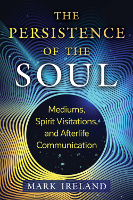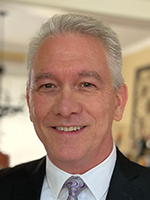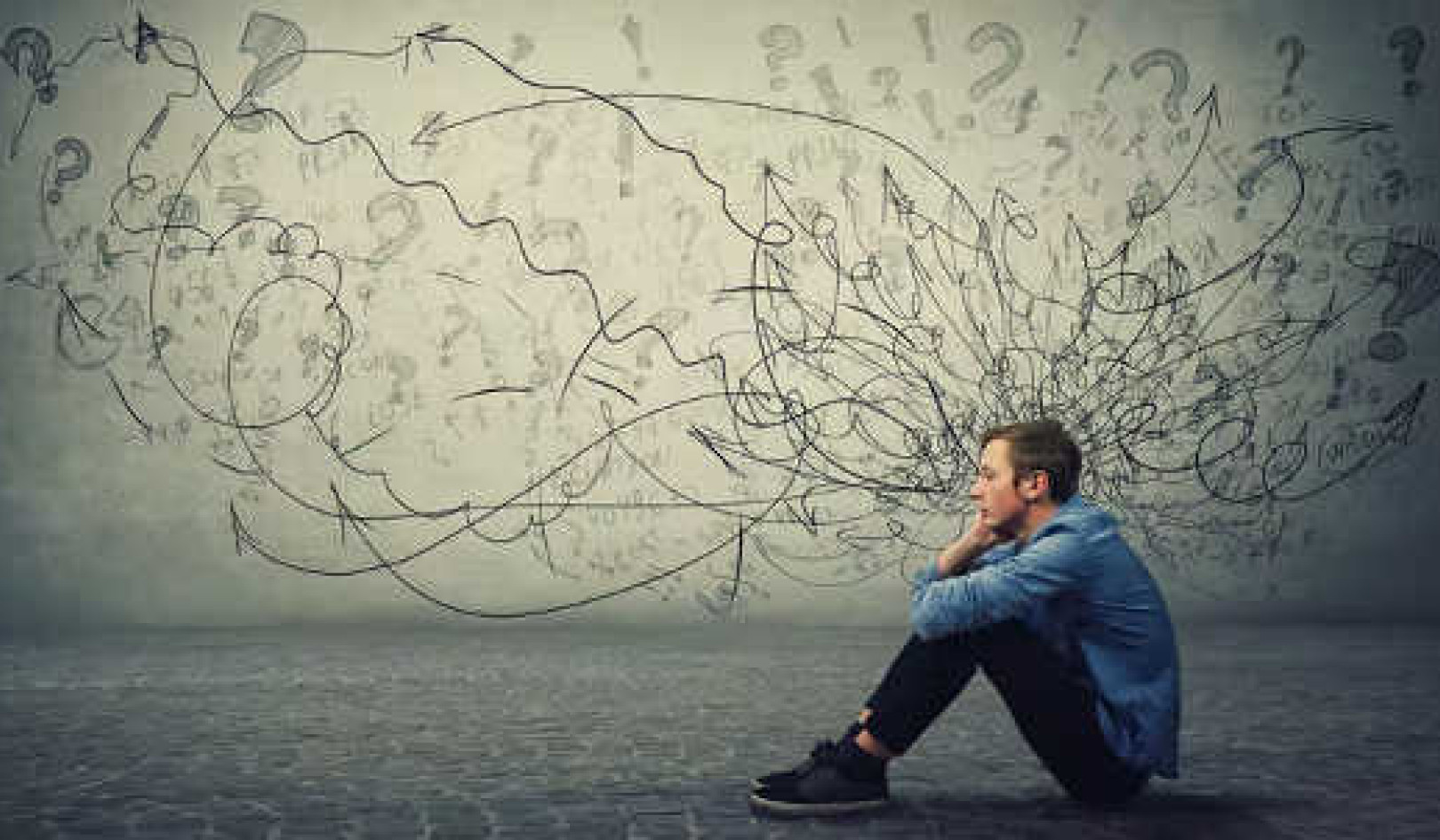
Image by Leopictures
`We live in a world where efficiency and practicality are valued, characterized by words like “analyze,” “strategize,” and “acquire.” Conversely, concepts such as “playful,” “wonder,” “inspire, “mystical,” and “quest” may be viewed as less important—even nonsensical to some. I’ve seen this manifest in the corporate workplace, where people are sometimes treated like soulless robots.
Sacrificed through this submission to convention is the joy associated with creative expression and the expansiveness of mind that arises from deep contemplation—especially as related to the mystery of being.
One example of this is the broad field of psychic phenomena. It is frequently rejected as impossible by individuals, as well as mainstream science, with no acknowledgment of any truth in its supporting evidence. This often occurs because of boxed-in thinking that is rooted in a materialistic worldview known as “scientism” which dominates much of our society’s vision of progress. People are rarely talked out of something ingrained in their thinking, and logical arguments rarely stand a chance against long-held beliefs.
If a person has been taught to believe that certain things are impossible, then he or she usually scoffs at their mention rather than weigh evidence in an unbiased way. As an example, consider comments made by psychologist Donald Hebb after he reviewed convincing evidence for psi (parapsychological psychic phenomena or powers) from J. B. Rhine’s research:
Why do we not accept ESP [extrasensory perception] as a psychological fact? [Rhine] has offered enough evidence to have convinced us on almost any other issue. . . . Personally, I do not accept ESP for a moment, because it does not make sense. My external criteria, both of physics and of physiology, say that ESP is not a fact despite the behavioral evidence that has been reported. . . . Rhine may still turn out to be right, improbable as I think that is, and my own rejection of his view is—in the literal sense—prejudice. (italics added for emphasis)
What is Real? The Nature of Reality
Some very smart people are now acknowledging the value of a more holistic view encompassing the mind and spirit, as well as the physical body. The average person may be unaware of such new perspectives and the science supporting them that unveil a strikingly new view of the nature of reality and how mind, in fact, can affect matter.
There are certain “ givens” that people have taken as fact, which are now being proven incorrect. This applies to assumptions made about the nature of reality based solely on sensoo y information.
People can become conditioned to accept their perceived reality (the observable physical world) as the totality of what is real. But these assessments are based on perceptions derived from physical senses that have inherent limitations and have proven unreliable at times. This is one reason why pilots are trained to fly by instruments rather than by trusting visual cues—their senses can betray them, and sole reliance on physical sight can lead to a crash. Or consider that when you watch a film with 3D glasses you perceive that you’re seeing three-dimensional objects, when you are in fact looking at light being projected onto a two-dimensional screen.
Surrounded by Unseen Energy and Forces
We are surrounded by energy and forces that are imperceptible to our five physical senses—from radio waves to ultraviolet light—yet we know these things exist. Might there be other types of energy? Could they be so subtle as to be undetectable by our most advanced technological devices yet occasionally register with an intuitive capacity within us?
My father, Richard Ireland, was a renowned psychic-medium. His most gratifying reward was opening people’s minds to possibilities greater than they’d previously imagined. He told people that they were also capable of perceiving a reality extending beyond the range of the physical senses.
Perhaps the day will come when Western science is able to confirm the existence of immaterial forces and realms. Compelling research in the field of parapsychology indirectly points to this possibility, yet most people in mainstream science can’t bring themselves to consider the implications.
Traditional materialistic science insists on identifying the “mechanism” that might explain the workings of psi and other phenomena considered “paranormal.” Without a material mechanism, psi phenomena and mediumship won’t be taken seriously. Worse yet, research won’t take place—at least not in any substantial way. Perhaps we would find more answers if we started with the right questions.
Facts? or Widely Accepted Assumptions...
At various periods throughout history, scientific advances have presented new truths that flew in the face of conventional wisdom. Unfortunately, those making these key discoveries usually found themselves fighting grueling battles to gain serious consideration for their ideas. In the 1500s, Nicholas Copernicus put forth the heliocentric model for the universe, placing the sun at the center of the solar system rather than the Earth. Less than a century later Galileo Galilei, “the father of modern observational astronomy,” proved Copernicus correct—to the dismay of the church.
Albert Einstein’s theory of relativity was initially dismissed by the scientific community because it challenged the framework of existing thinking. His concepts did not fit within the paradigm of the day, and his assertions contradicted the accepted constructs about the architecture of the universe. Einstein was throwing darts at the Holy Grail of science by questioning the unquestionable, threatening a platform then viewed as a basis of “fact.”
Since that time, we have learned that many of these “facts” were no more than widely accepted assumptions. Even Einstein’s special relativity, which was eventually accepted by the scientific community, later bumped into some perplexing issues.
Entanglement and Interconnected Oneness
Within the field of quantum physics, an odd feature called “entanglement” has been validated, presenting a seeming conflict with Einstein’s special relativity hypothesis. Entanglement states that two particles that have become linked in a special way can be separated by any distance—even to opposite ends of the universe—and a change in one particle will be immediately reflected in the other. Entanglement also seems to imply a universe that is highly interconnected rather than comprised of a multitude of disparate parts.
This ongoing churning of ideas and theories reinforces an important point. We simply do not understand the full scope of the universe and life. To learn and progress, we must encourage unconventional thinking and challenge existing standards.
Some scientists and scientific communities point to assumptions as if they were fact. This requires any new theories to fit within their limited schema. Sadly, this practice discourages people from conducting a sincere and open search for the truth in unsanctioned areas, resulting in a perpetuation of convention and a diminished number of significant discoveries.
The Desire for Certainty: Protecting Our Worldview
The human desire for certainty is so strong that we take any action necessary to protect our worldview. This proclivity has reared its ugly head in most human endeavors: science, religion, and even business. We prefer the comfort and predictability of a universe that we think we understand.
Modern Western culture has limited our spiritual understanding. I now turn to a scientific discipline that offers more questions than answers: quantum mechanics. Thanks to modern physical science, we know that the “stuff” of the material world is nothing but energy in vibration manifesting as the physical objects we observe. Einstein demonstrated that matter and energy are interchangeable (E=MC2), therefore, we know that items that appear solid are essentially the same as light or electricity.
Is it possible that wise sages, and psychically gifted individuals have been clued into the true nature of the universe all along, through intuitive rather than analytical means? If we are all universally connected through an underlying matrix, as I suspect may be the case, then it follows that sensitive individuals would be aware of this knowledge through subtle means.
Through quantum physics it has also been demonstrated that the universe is not comprised of a multitude of disconnected objects. Instead, it has been revealed that there are underlying processes at the quantum level that play a role in how the physical universe manifests on the macro scale. We play an integral part in this progression.
While it may be difficult for some to accept, science has proven that the “observer” (you or me) assumes a role in bringing the physical universe—an observable state that we call physical reality—into being. As a result of our observation, underlying subatomic components (electrons) move from a state of potentiality into fixed positions, producing the everyday objects we observe and our perceived reality. Could it be that reality is a subjective rather than an objective phenomenon?
Ultimately the seemingly solid objects we see are made of the same stuff as a photon of light, a radio wave, or a thought. All are forms of energy manifested in different ways. I would offer that the same may be true with other forms of energy tied to unseen realms. Electrons appear and then disappear at times, but no one knows where they go when they are not here.
Perhaps people are mistaken when they look out at the physical world and assume that they perceive the full depth of reality with a high degree of accuracy. Instead, we are utilizing our senses to capture a narrow bandwidth of information that our brain deciphers to create an interpreted reality.
There is a quote, widely attributed to Einstein, that states, “It is entirely possible that behind the perception of our senses, worlds are hidden of which we are unaware.” Whether those were in fact Einstein’s words I cannot say, but I resonate with the sentiment, and with the possibility open, it’s not too difficult to imagine other realms of existence where the deceased may flourish with their consciousness untouched by the process of physical death.
Biocentrism: A New Way to View Consciousness and Reality
In 2007 Dr. Robert Lanza, chief scientific officer at Advanced Cell Technology and adjunct professor at Wake Forest University School of Medicine, authored a theory called “biocentrism,” which challenges the existing paradigm accepted by most in science and academia today. According to U.S. News and World Report, Lanza’s “mentors described him as a ‘genius,’ a ‘renegade’ thinker, even likening him to Einstein.”
Biocentrism calls out flaws in the existing model, offering a new way to view consciousness and reality. In a 2010 radio interview Lanza noted, “Space and time are not external things.” Rather, he indicated that “the mind—through the process of observation—brings space and time into being.”
Speaking to the possibility of other dimensional realities and an afterlife, Lanza said:
According to the “many-worlds” interpretation of quantum physics, there are an infinite number of universes—known as the multiverse—associated with each possible observation. Biocentrism extends this idea, suggesting that life has a non-linear dimensionality that encompasses the multiverse. Experiments show that measurements an observer makes can even influence events that have already happened in the past.
On his website Lanza offers the following:
Life is an unfolding adventure that really transcends our linear way of thinking . . . although our bodies self-destruct, that “me” feeling is just energy that operates in the brain. And we know that energy doesn’t go away at death. One of the surest principles of science is that energy never dies—it can never be created or destroyed. Life has this non-linear dimensionality that transcends any individual history or universe. It’s sort of like a perennial flower that returns to bloom in the multiverse. Death doesn’t really exist in a timeless, space-less world.
There is evidence suggesting that other realms exist where the consciousness of previously living individuals now thrives.
Accessing the True Self
Renowned paranormal researcher Hans Holzer earned a master’s degree in comparative religion and a doctorate in parapsychology at the London College of Applied Science. Additionally, he authored more than 135 books on the paranormal and taught parapsychology at the New York Institute of Technology. In his book The Psychic Yellow Pages, Holzer reports:
The gift of being a psychic “reader,” a medium, a clairvoyant depends on a force within that person that Professor Joseph Rhine of Duke University called extra-sensory perception or ESP for short. Some people possess more of this energy force, some less, but it is neither miraculous nor “supernatural” in nature; it is merely puzzling to those who cling to the belief in a universe that can be perceived only by using the ordinary five senses.
Speaking about his own psychic function, my father mentioned listening to “the small, still voice within.” This statement implies the existence of an inner capacity possessed by each of us in varying degrees that can be utilized to access information without the use of physical senses.
Might this faculty reveal something about who or what we really are at a deeper level? Is this how we access our “true self”—the essential spiritual aspect of us beyond the physical body we now inhabit?
Copyright 2013, 2023. All Rights Reserved.
Originally published as 'Messages from the Afterlife'.
Adapted (2023 edition) with permission
of the publisher, Inner Traditions International.
Article Source:
BOOK: The Persistence of the Soul
The Persistence of the Soul: Mediums, Spirit Visitations, and Afterlife Communication
by Mark Ireland.
 After the unexpected passing of his youngest son, Mark Ireland began a search for messages from the afterlife and discovered remarkable proof of life after death.
After the unexpected passing of his youngest son, Mark Ireland began a search for messages from the afterlife and discovered remarkable proof of life after death.
Interweaving profound personal experience and compelling scientific evidence, Mark presents a deep dive into psychic-medium phenomena, spirit visitations, afterlife communication, reincarnation, synchronicity, and near-death experiences, pointing to the survival of consciousness after bodily death. He details how he confronted his resistance to engaging in the spiritual and parapsychological practices of his deceased father, prominent 20th-century psychic Dr. Richard Ireland.
For more info and/or to order this book, click here. Also available as a Kindle edition.
About the Author
 Mark Ireland is an author, researcher, and co-founder of Helping Parents Heal, an organization providing support to bereaved parents globally. He has actively participated in mediumship research studies conducted by esteemed institutions, including the University of Arizona and the University of Virginia. As a leading figure in the field, he operates a Medium Certification program. Mark is also the author of "Soul Shift".
Mark Ireland is an author, researcher, and co-founder of Helping Parents Heal, an organization providing support to bereaved parents globally. He has actively participated in mediumship research studies conducted by esteemed institutions, including the University of Arizona and the University of Virginia. As a leading figure in the field, he operates a Medium Certification program. Mark is also the author of "Soul Shift".
Visit his website: MarkIrelandAuthor.com/

























